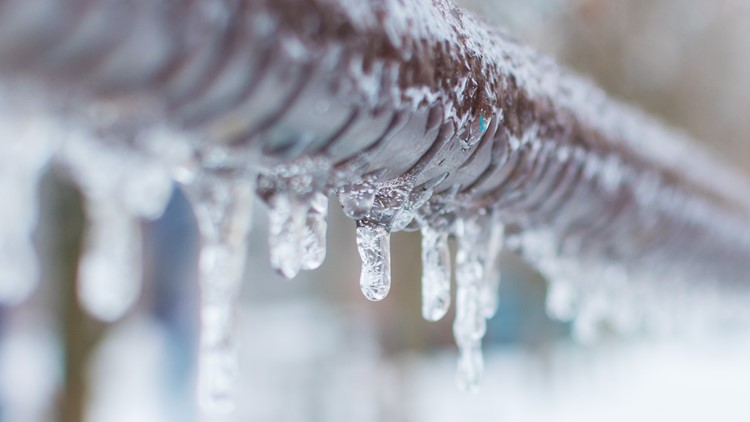Essential Tips to Avoid Frozen Plumbing in Cold Weather
Essential Tips to Avoid Frozen Plumbing in Cold Weather
Blog Article
Are you on the lookout for content concerning How to prepare your home plumbing for winter weather?

Cold weather can wreak havoc on your plumbing, particularly by freezing pipes. Here's how to prevent it from happening and what to do if it does.
Introduction
As temperatures drop, the risk of frozen pipelines boosts, possibly leading to costly repairs and water damage. Comprehending how to prevent icy pipes is important for property owners in cold environments.
Prevention Tips
Insulating vulnerable pipelines
Wrap pipelines in insulation sleeves or utilize heat tape to secure them from freezing temperatures. Concentrate on pipes in unheated or outside locations of the home.
Heating methods
Keep indoor spaces adequately heated up, specifically areas with plumbing. Open up cabinet doors to permit cozy air to distribute around pipelines under sinks.
Just how to identify frozen pipelines
Look for reduced water circulation from taps, unusual odors or sounds from pipelines, and visible frost on subjected pipes.
Long-Term Solutions
Architectural adjustments
Think about rerouting pipes away from exterior walls or unheated locations. Add additional insulation to attics, basements, and crawl spaces.
Updating insulation
Buy top notch insulation for pipelines, attic rooms, and wall surfaces. Appropriate insulation assists preserve consistent temperatures and reduces the risk of icy pipelines.
Securing Outside Plumbing
Garden tubes and exterior faucets
Disconnect and drain pipes yard hoses before winter months. Set up frost-proof spigots or cover exterior faucets with insulated caps.
Recognizing Frozen Pipelines
What triggers pipes to ice up?
Pipes ice up when subjected to temperature levels below 32 ° F (0 ° C) for extended durations. As water inside the pipes ices up, it increases, putting pressure on the pipeline walls and possibly creating them to burst.
Risks and damages
Frozen pipelines can lead to water disruptions, building damage, and expensive fixings. Burst pipes can flooding homes and create substantial structural damages.
Signs of Frozen Pipeline
Identifying frozen pipelines early can prevent them from bursting.
What to Do If Your Pipes Freeze
Immediate activities to take
If you think icy pipelines, keep faucets open to ease stress as the ice thaws. Make use of a hairdryer or towels taken in warm water to thaw pipelines slowly.
Conclusion
Stopping icy pipes calls for proactive procedures and quick reactions. By understanding the causes, indicators, and safety nets, home owners can protect their plumbing during cold weather.
6 Proven Ways to Prevent Frozen Pipes and Protect Your Home
Disconnect and Drain Garden Hoses
Before winter arrives, start by disconnecting your garden hoses and draining any remaining water. Close the shut-off valves that supply outdoor hose bibs and leave the outdoor faucet open to allow any residual water to drain. For extra protection, consider using faucet covers throughout the colder months. It’s also important to drain water from any sprinkler supply lines following the manufacturer’s directions.
Insulate Exposed Pipes
Insulating your pipes is an effective way to prevent freezing. Pipe insulation is readily available at home improvement stores and is relatively inexpensive. Pay close attention to pipes in unheated areas such as the attic, basement, crawl spaces, or garage. Apply foam insulation generously to create a buffer against the cold. You can also wrap your pipes in heat tape or thermostat-controlled heat cables for added warmth.
Seal Air Leaks
Inspect your home for any cracks or openings that could let in cold air. Seal any holes around the piping in interior or exterior walls, as well as the sill plates where your home rests on its foundation. Additionally, make sure to keep your garage door closed unless you’re entering or exiting. Leaving it open creates a significant air leak that can lead to frozen pipes.
Allow Warm Air Circulation
During cold snaps, it’s essential to allow warm air to circulate evenly throughout your home. Leave interior doors ajar to promote better airflow. Open kitchen and bathroom cabinets to help distribute heat consistently around the rooms. If you have small children or pets, be sure to remove any household chemicals or potentially harmful cleaners from open cabinets for safety.
Let Faucets Drip
A small trickle of water can make a big difference in preventing ice formation inside your pipes. When temperatures drop significantly, start a drip of water from all faucets served by exposed pipes. This continuous flow helps prevent the water from freezing. Additionally, running a few faucets slightly can relieve pressure inside the pipes, reducing the chances of a rupture if the water inside does freeze.
https://choateshvac.com/6-proven-ways-to-prevent-frozen-pipes-and-protect-your-home/

As a serious person who reads on Preventing and dealing with frozen pipes, I think sharing that editorial was a good idea. Appreciated our write up? Please quickly share it. Help another person check it out. Kudos for your time. Return soon.
Estimate Report this page